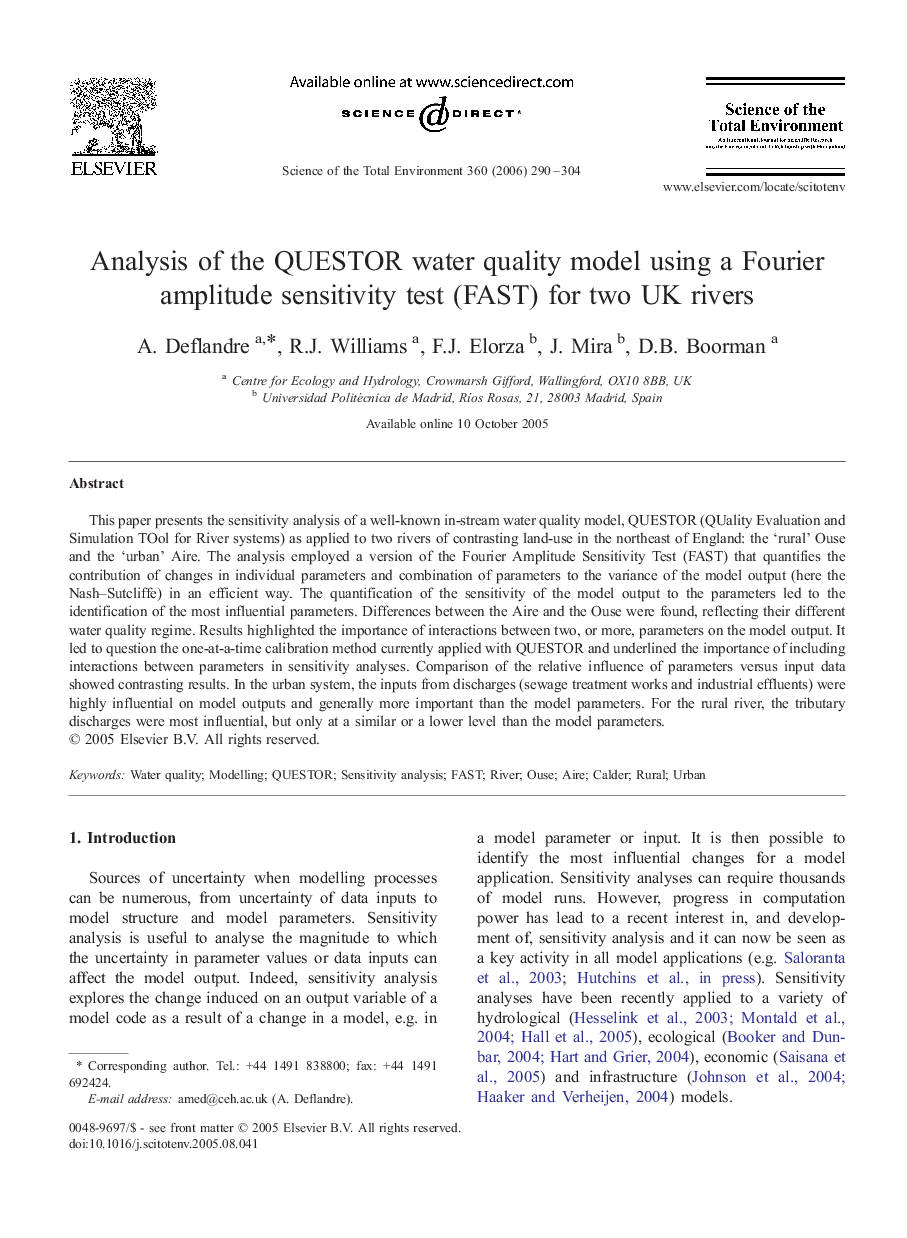| Article ID | Journal | Published Year | Pages | File Type |
|---|---|---|---|---|
| 4434205 | Science of The Total Environment | 2006 | 15 Pages |
This paper presents the sensitivity analysis of a well-known in-stream water quality model, QUESTOR (QUality Evaluation and Simulation TOol for River systems) as applied to two rivers of contrasting land-use in the northeast of England: the ‘rural’ Ouse and the ‘urban’ Aire. The analysis employed a version of the Fourier Amplitude Sensitivity Test (FAST) that quantifies the contribution of changes in individual parameters and combination of parameters to the variance of the model output (here the Nash–Sutcliffe) in an efficient way. The quantification of the sensitivity of the model output to the parameters led to the identification of the most influential parameters. Differences between the Aire and the Ouse were found, reflecting their different water quality regime. Results highlighted the importance of interactions between two, or more, parameters on the model output. It led to question the one-at-a-time calibration method currently applied with QUESTOR and underlined the importance of including interactions between parameters in sensitivity analyses. Comparison of the relative influence of parameters versus input data showed contrasting results. In the urban system, the inputs from discharges (sewage treatment works and industrial effluents) were highly influential on model outputs and generally more important than the model parameters. For the rural river, the tributary discharges were most influential, but only at a similar or a lower level than the model parameters.
